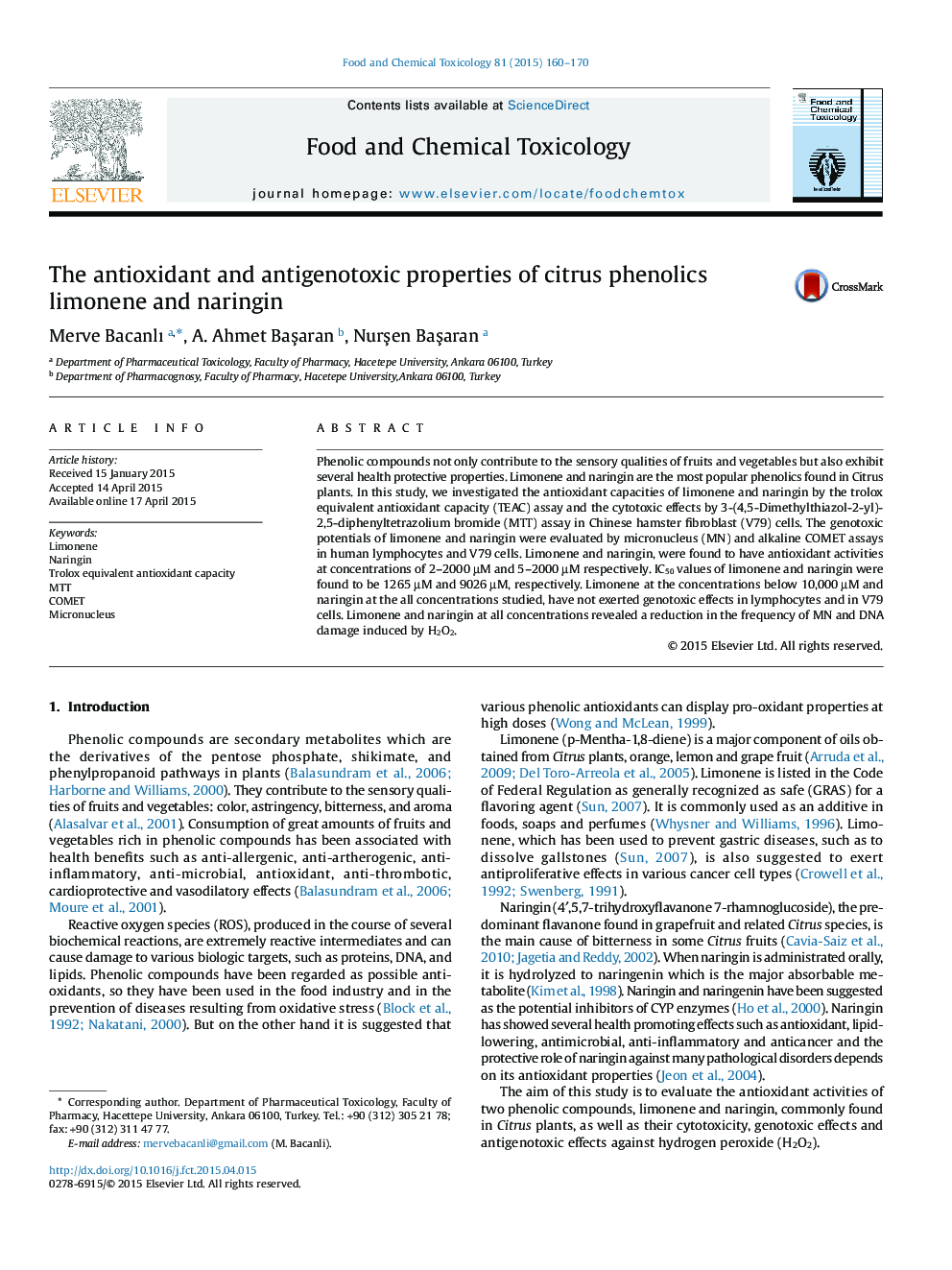| Article ID | Journal | Published Year | Pages | File Type |
|---|---|---|---|---|
| 5849768 | Food and Chemical Toxicology | 2015 | 11 Pages |
â¢The antioxidant capacities of limonene and naringin were investigated.â¢The cytotoxic effects of limonene and naringin in V79 cells were evaluated by MTT assay.â¢The genotoxic and antigenotoxic effects of limonene and naringin were investigated in human lymphocytes and V79 cells.
Phenolic compounds not only contribute to the sensory qualities of fruits and vegetables but also exhibit several health protective properties. Limonene and naringin are the most popular phenolics found in Citrus plants. In this study, we investigated the antioxidant capacities of limonene and naringin by the trolox equivalent antioxidant capacity (TEAC) assay and the cytotoxic effects by 3-(4,5-Dimethylthiazol-2-yl)-2,5-diphenyltetrazolium bromide (MTT) assay in Chinese hamster fibroblast (V79) cells. The genotoxic potentials of limonene and naringin were evaluated by micronucleus (MN) and alkaline COMET assays in human lymphocytes and V79 cells. Limonene and naringin, were found to have antioxidant activities at concentrations of 2-2000âµM and 5-2000âµM respectively. IC50 values of limonene and naringin were found to be 1265âµM and 9026âµM, respectively. Limonene at the concentrations below 10,000âµM and naringin at the all concentrations studied, have not exerted genotoxic effects in lymphocytes and in V79 cells. Limonene and naringin at all concentrations revealed a reduction in the frequency of MN and DNA damage induced by H2O2.
